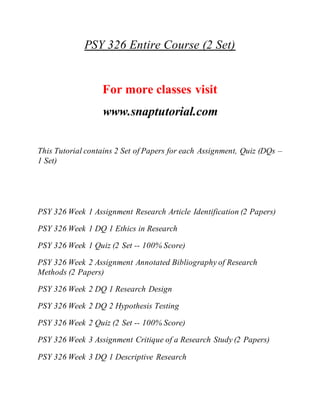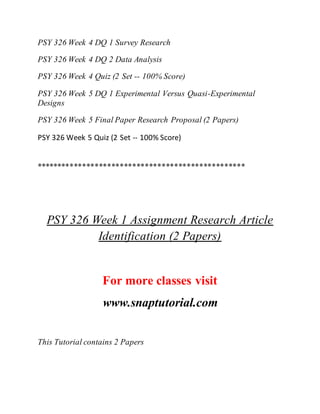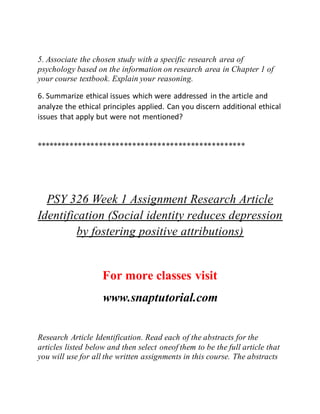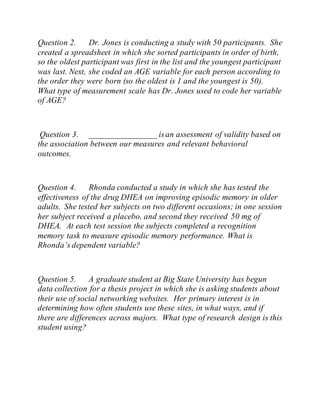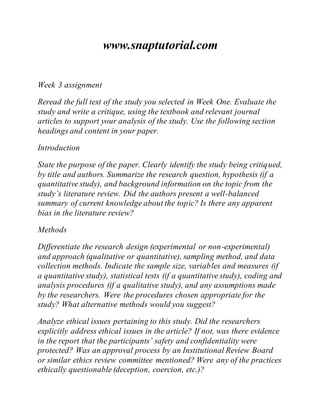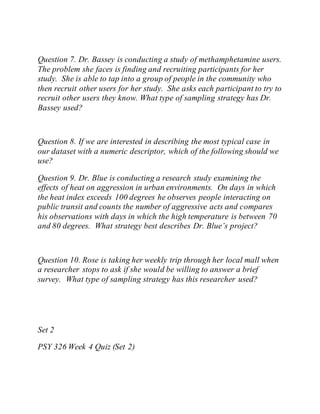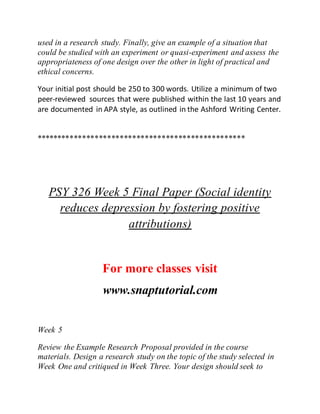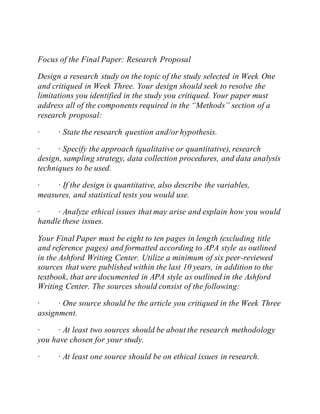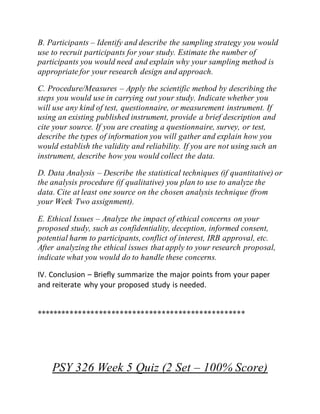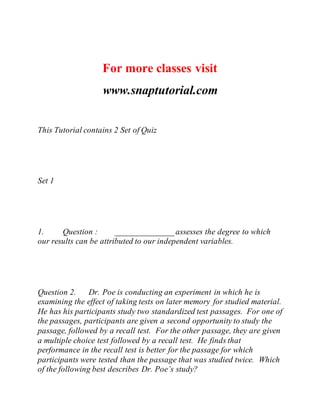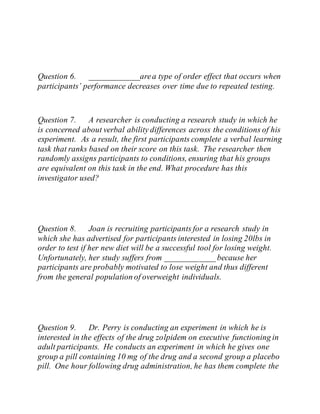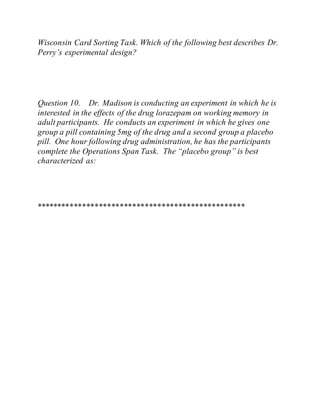The document outlines the coursework and assignments for a psychology course (PSY 326), detailing various assignments, discussion questions, and quizzes across multiple weeks. It includes instructions for selecting research articles, conducting critiques, and writing assignments formatted in APA style, requiring comprehension of qualitative and quantitative research methods. Additionally, the document emphasizes the ethical considerations in research and outlines quiz content related to psychological research areas.
